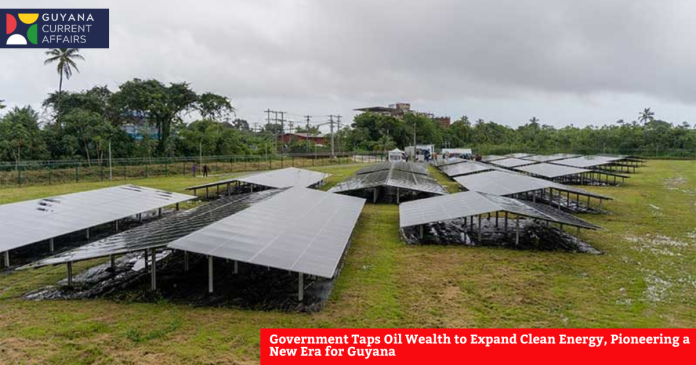Guyana is leveraging its booming oil revenues to spearhead a major transformation of its energy sector, channeling billions into clean and renewable energy projects as part of a bold national strategy for sustainable development.
Central to this drive is the landmark Gas-to-Energy (GtE) project, a flagship initiative supported by a $51.2 billion investment—by far the largest allocation in the government’s $88 billion power generation budget. The GtE project will transport natural gas from the offshore Stabroek block to an integrated processing facility and a 300-megawatt power plant on the West Bank of Demerara. This is expected to double Guyana’s electricity generation capacity, slash electricity costs by up to 50 percent, and significantly reduce the country’s reliance on imported diesel and heavy fuel oil.
The GtE project is only one pillar of Guyana’s broader Low Carbon Development Strategy (LCDS) 2030, which aims to balance the benefits of oil wealth with ambitious investments in hydropower, solar, wind, and biomass energy. The long-awaited Amaila Falls Hydropower Project, multiple solar farms, and mini-grid systems for hinterland communities are all moving forward, with the goal of achieving up to 90 percent renewable energy in the national mix by 2030.
Oil revenues are also being used to strengthen the national grid, expand electrification in remote areas, and modernize energy infrastructure to ensure reliability and affordability for all Guyanese. The government’s approach is designed to avoid the pitfalls of the “oil curse” by investing in long-term, inclusive prosperity—building human capital, diversifying the economy, and protecting the environment.
President Dr. Mohamed Irfaan Ali and Vice President Dr. Bharrat Jagdeo have emphasized that these investments are not just about energy, but about creating jobs, reducing household expenses, and positioning Guyana as a global leader in sustainable development. With over US$12 billion in oil revenues projected from 2025 to 2028, the country is poised to deliver transformative change, turning its fossil fuel windfall into a foundation for a cleaner, greener, and more resilient future.


